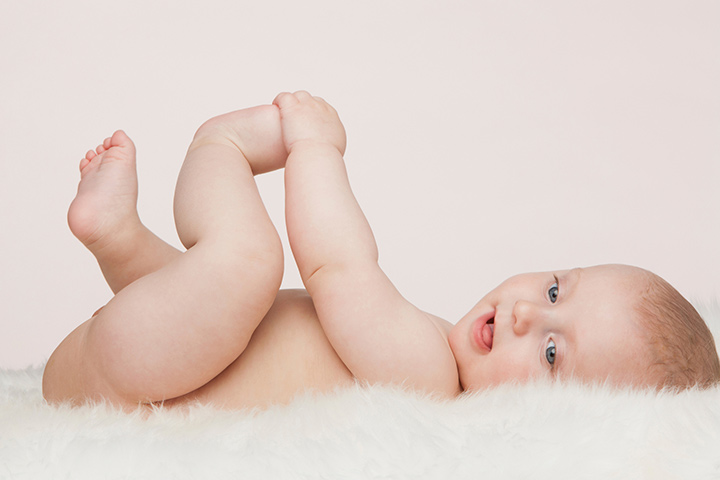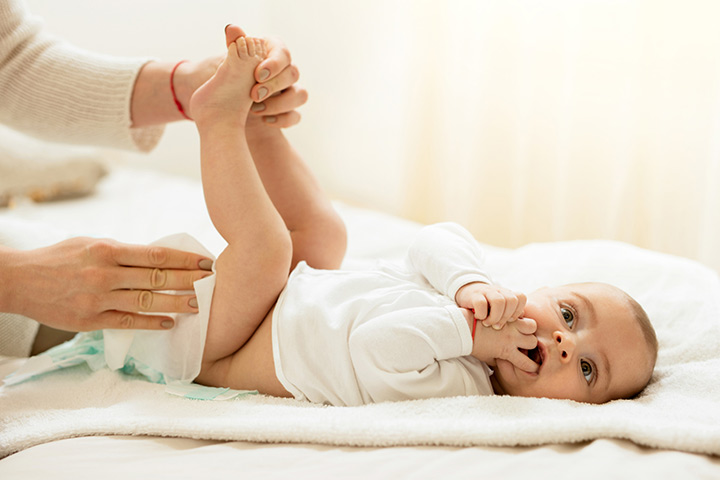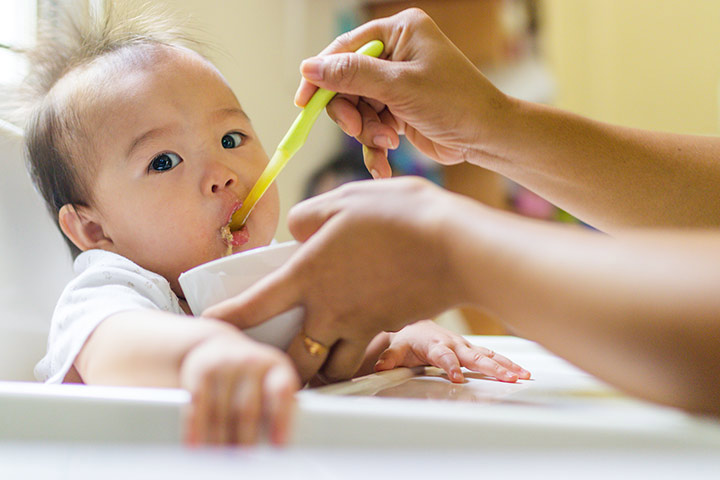
Image: iStock
No matter what we do, diaper rashes are one of the most common skin problems among babies. Have you noticed your baby making a fuss when you are changing their diaper? It might be because of diaper rash. It happens because of wet or soiled diapers, chafing, or skin sensitivity. The urine and stool can irritate your baby’s skin making it tender and red (1). There are several myths surrounding diaper rashes. Continue reading the post as we solve 5 diaper rash mysteries.
1. Should I Let My Baby Go Bare To Help With His/Her Diaper Rash?
Yes, it’s a good idea to let your baby be bare-bottomed for a while. It will allow the skin around the area to dry and help in the healing process (2). If your baby has a diaper rash, let them be naked for short periods of time before putting on a new diaper. Scrubbing the skin can irritate the skin even further. The skin around the diaper rash can turn red and tender, and letting your baby air dry can help with mild cases of diaper rash. Putting the diaper on a big loose can also help in air circulation around your baby’s bum. Let your kid be naked below the waist for some time. You can engage your baby for some time by playing with them.
2. Can I Let My Baby Sleep Through The Night Without A Diaper Change If There’s Diaper Rash?
Before your baby’s bedtime, it’s a good idea to apply a barrier ointment. Use an ointment that contains zinc oxide and petroleum jelly as its ingredients (3). It can help soothe the irritated skin of your little one. During the night time, check if the diaper is soiled and change it immediately before putting your baby to sleep. If you feel that the diaper rash doesn’t improve, consider changing it during the night. Check on your baby before going to bed yourself to see if the diaper is wet or soiled.
3. What Are The Things To Take Care Of When Changing A Baby With A Diaper Rash?
Diaper rash in babies requires some extra care and attention during a diaper change. Prompt removal of wet or soiled diapers can help from irritating the skin even further. Clean your baby’s bottom using warm water every time you change the diaper. You can use the sink or tub to clean your baby and even a water bottle would suffice. You can use baby wipes, moist washcloths or cotton balls for wiping, but remember to be gentle. Using a clean cloth, gently pat the area dry. If you are using wipes, go for alcohol and fragrant-free ones (4). Make sure that you don’t tighten the diaper too much. Also, maintain good hygiene and wash your hands after every diaper change to restrict the spread of bacteria or yeast.
4. My Baby Has Diaper Rash. What Kind Of Cream Should I Use?
Use an ointment that contains either petroleum jelly or zinc oxide after cleaning the area during a diaper change (5). Try using it as frequently as you can every time you change the diaper. It works as a protective barrier against skin irritants. Doctors recommend avoiding the use of cornstarch or talcum powder and stick with the ointment.
5. Can Change In My Baby’s Diet Cause Diaper Rash?
If you have started introducing new foods to your baby’s diet, it can change the composition of your baby’s poop. If your baby has started to chew solids, it can slightly harden your baby’s stool. It can also lead to frequent bowel movements. This can irritate your baby’s skin and cause diaper rash in your baby (6).
Diaper rashes are nothing to worry about if you clean the area thoroughly, pat dry and apply a barrier ointment. Be attentive to your baby and check if a diaper change is required. These simple steps can go a long way in keeping diaper rashes at bay.


















